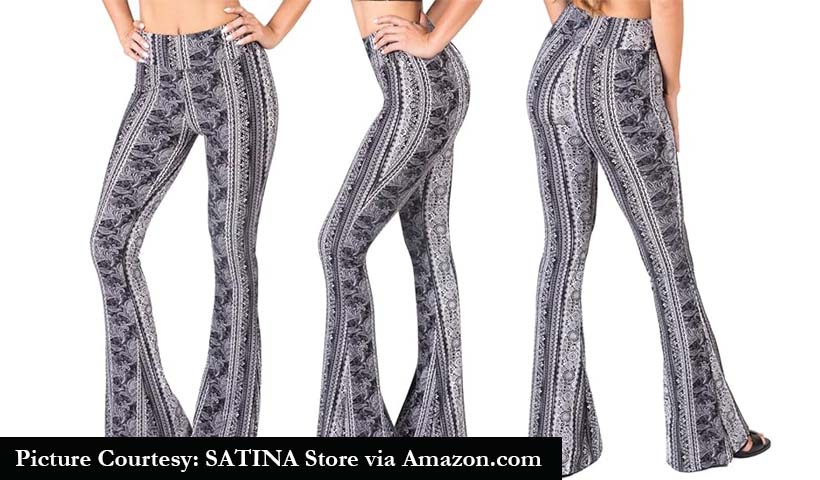Forbidden pants have long been a fascination and a mystery. Contemporary fashion trends changing from ancient traditions and religious beliefs, deemed taboo by social norms or personal identity, have provoked controversy and intrinsic interest. This article will explore historical meaning and culture the impact of taboo pants and explore the reasons behind the existence of a taboo environment. So, sit back and get ready to unveil the hidden secrets and meanings behind these taboo clothes.
Also Read: Single Mom Dating Profile Starter Pack
What Define Forbidden Pants?
The Forbidden Pant isn’t just unconventional or revolutionary. They defy unspoken rules, go against social expectations, and challenge acceptable clothing. They usually have the following characteristics:
Extreme Revealing:
Pants that expose large portions of the body, leaving little to the imagination.
Maddening Design:
Pants that feature knowingly suggestive or sexually tempting elements, such as cutouts, sheer fabrics, or revealing contour.
Questionable Material:
Pants made from heretic or unusual materials, such as leather, latex, or PVC, that evoke a sense of fetishism or transgression.
Unconventional Fit:
Pants that appropriate cultural essence or designs disrespectfully or offensively.
The Convenience of the Forbidden
Despite its ban, Forbidden Pants continues in order to attract and seduce many. They give individuality and freedom in an effort to express oneself as a renegade. These pants are an artistic form of self-expression and are difficult to societal norms for some.
Why These Pants Are Forbidden?
Reasons for banning a pair of forbidden pants vary depending on cultural norms, social norms, and personal beliefs. However, some common reasons include:
Public Modesty:
Pants considered too revealing can be examined as inappropriate in public places, as they can cause offense or discomfort to others.
Professionalism:
Absurdly provocative or overly hypocritical pants may not be appropriate in professional environments, where more conservative dress codes are expected.
Moral Standards:
Some forbidden pants may conflict with religious or ethical beliefs, especially those that expose too much skin or promote sexualized imagery.
Social Conformality:
Pants that deviate significantly from the norm can challenge social expectations and attract negative attention or social stigma.
Consequences Of Wearing Forbidden Pants
While wearing forbidden pants can be an unshackle experience, it is important to know the potential consequences. These may include:
Social Stigma:-
Wearing pants that are deemed inappropriate can turn to judgment, criticism, or social discrimination.
Legal Issue:-
In some cases, wearing certain forbidden pants may violate public lewdness laws or other regulations.
Professional Impact:-
Wearing these pants can result in disciplinary action or loss of employment in a professional setting.
A History of Censorship & Controversy Of Forbidden Pants.
We have used clothing as a potent means of expression throughout human history. On the other hand, some clothing pieces have come under fire and criticism for allegedly going against religious or social norms. Among these, forbidden trousers have a special place. It represents both the socially imposed limitations and the struggle for self-expression.
Origin of Prohibition.
It can be traced back to the early nineteenth century which prohibited women from wearing sandals. Men wore trousers, and strict social rules dictated that girls wore skirts and dresses in Victorian England. It takes into account the fashion belief that women are likely to be more subdued and stylish than men in the gendered fashion department.
Suffragette Movement.
Women suffragists rebelled in opposition to social norms by carrying pants as a demand for equality in the overdue nineteenth and 20th centuries. Women pants with greater strength and freedom, allowing them to participate in more activity in public life. The sight of women in pants became a powerful symbol of the feminist movement.
Religious Restriction
In certain cultures and nations, women wearing pants has led to significant conflict. For instance, women are expected to dress modestly in some Muslim societies, which typically entails covering one’s legs and donning loose apparel because it is thought to be appropriate. Wearing it in public was inappropriate for a woman.
Legal Challenges
This formally challenged and broke the American ban on women wearing provocative clothing. In 1938, the Supreme Court ruled in favor of a woman arrested for wearing pants within public. But women began to choose more pants by 1960 and 1970.
Modern Controversies
Despite legislative changes, the pants ban debate continues in some cases. A Canadian high school made headlines by banning girls from wearing yoga pants or leggings, sparking concerns about ‘stress’ in 2014. But a university in Florida banned students from wearing ‘loose trousers,’ and said it violated the school’s dress code.
Forbidden Pants and Current Generation
We live in 2024, where earning money is so easy for some influencers by showing cleavage or glamour. TikTok, a social media platform designed for sharing short videos, was made to share informative, entertaining videos to help and entertain people, TikTok was soon filled with creators who were just posting a video in Alluring dresses to gain followers just for some views and popularity. If we are not wrong, the Forbidden Pant trend was started again by some users in TikTok. When the First user who posted a video in Forbidden Pants got a lot of views others started following the trend to get followers by alluring.
Symbolism and Significance
Forbidden pants have grown to be a symbol of the conflict for gender equality and the electricity of clothing in order to assign all social norms. These pants demonstrate the problem between one’s identity and those of society. Women confirmed their right to choose what to wear and manage their bodies by opposing the pant ban.
Conclusion
Forbidden pants have faced numerous bans and hate from the day of their evolution. However, these unique trousers have been a symbol of equality and modesty. Even though the ban on women wearing pants is frequently debated around the globe, it still exists in certain situations, underscoring the continuous fight for identity and equality.

I am Vivek Singh owner and publisher of newsofx.com. I am a journalist by profession. I did my Bachelor’s in Journalism and Mass Communication from Amity University Jharkhand and my Master’s in the same from Central University of Jharkhand grabbing the gold medal.
I am a Men’s Rights Activist, International Men’s Day and World Day of the Boy Child India coordinator, and Global Media coordinator for both of these days.

